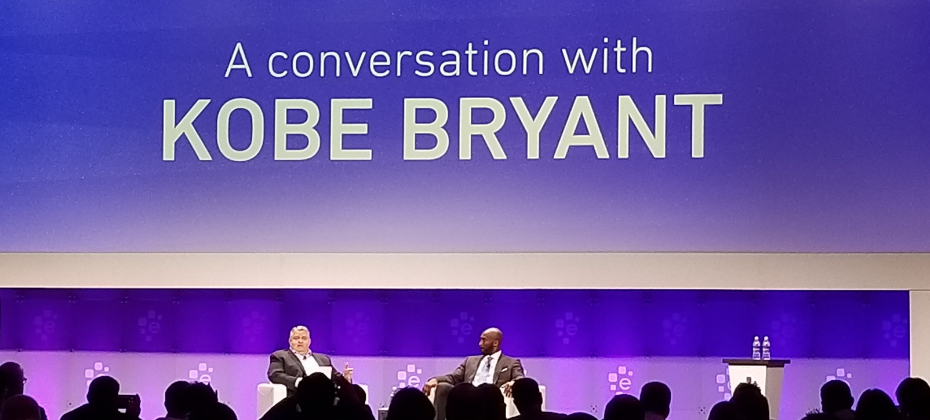Tag: 1st party fraud

In a series of articles, we talk about different types of fraud and how to best solve for them. This article will explore first-party fraud and how it's similar to biting into a cookie you think is chocolate chip, only to find that it’s filled with raisins. The raisins in the cookie were hiding in plain sight, indistinguishable from chocolate chips without a closer look, much like first-party fraudsters. What is first-party fraud? First-party fraud refers to instances when an individual purposely misrepresents their identity in exchange for goods or services. In the financial services industry, it's often miscategorized as credit loss and written off as bad debt, which causes problems when organizations later try to determine how much they’ve lost to fraud versus credit risk. Common types of first-party fraud include: Chargeback fraud: Also known as "friendly fraud," chargeback fraud occurs when an individual knowingly makes a purchase with their credit card and then requests a chargeback from the issuer, claiming they didn't authorize the purchase. Application fraud: This takes place when an individual uses stolen or manipulated information to apply for a loan, credit card or job. In 2023, the employment sector accounted for 45% of all false document submissions — 70% of those who falsified their resumes still got hired. Fronting: Done to get cheaper rates, this form of insurance fraud happens when a young or inexperienced individual is deliberately listed as a named driver, when they're actually the main driver of the vehicle. Goods lost in transit fraud (GLIT): This occurs when an individual claims the goods they purchased online did not arrive. To put it simply, the individual is getting a refund for something they actually already received. A first-party fraudster can also recruit “money mules” — individuals who are persuaded to use their own information to obtain credit or merchandise on behalf of a larger fraud ring. This type of fraud has become especially prevalent as more consumers are active online. Money mules constitute up to 0.3% of accounts at U.S. financial institutions, or an estimated $3 billion in fraudulent transfers. How does it impact my organization? Firstly, there are often substantial losses associated with first-party fraud. An imperfect first-party fraud solution can also strain relationships with good customers and hinder growth. When lenders have to interpret actions and behavior to assess customers, there’s a lot of room for error and losses. Those same losses hinder growth when, as mentioned before, businesses anticipate credit losses that aren’t actually credit losses. This type of fraud isn’t a single-time event, and it doesn’t occur at just one point in the customer lifecycle. It occurs when good customers develop fraudulent intent, when new applicants who have positive history with other lenders have recently changed circumstances or when seemingly good applicants have manipulated their identities to mask previous defaults. Finally, first-party fraud impacts how your organization categorizes and manages risk – and that’s something that touches every department. Solving the first-party fraud problem First-party fraud detection requires a change in how we think about the fraud problem. It starts with the ability to separate first- and third-party fraud to treat them differently. Because first-party fraud doesn’t have a victim, you can’t work with the person whose information was stolen to confirm the fraud. Instead, you’ll have to implement a consistent monitoring system and make a determination internally when fraud is suspected. As we’ve already discussed, the fraud problem is complex. However with a partner like Experian, you can leverage the fraud risk management strategies required to perform a closer examination and the ability to differentiate between the types of fraud so you can determine the best course of action moving forward. Additionally, our robust fraud management solutions can be used for synthetic identity fraud and account takeover fraud prevention, which can help you minimize customer friction to improve and deepen your relationships while preventing fraud. Contact us if you’d like to learn more about how Experian is using our identity expertise, data and analytics to improve identity resolution and detect and prevent all types of fraud. Contact us

It’s clear that the digital transformation we experienced this year is here to stay. While there are many positives associated with this transformation – innovation, new ways to work, and greater online connectedness – it’s important that we review the risks associated with these trends as well. In late 2019 and throughout 2020, Experian surveyed consumers and businesses. We asked about online habits, expectations for information security and plans for future spending. Unsurprisingly, about half of consumers think they’ll continue to spend more online in the coming year. Those same consumers now have a higher expectation for their online experience than before the onset of COVID-19. Hand-in-hand with the online activity trends come increased risks associated with identity theft and fraud as criminals find new chances to steal information. In response to both of these trends, businesses and consumers want a balance between security and convenience. Our latest trends report dives into the new opportunities 2020 has created for fraud, and the opportunities to prevent identity theft or manipulation and the associated losses while building stronger relationships. Download the full North America Trends Report for a look into North American trends over the last year and to learn how fraud prevention and positive customer relationships are actually two sides of the same coin. North America Trends Report

This week, Experian released a new version of our CrossCore® digital identity and fraud risk platform, adding new tools and functionality to help businesses quickly respond to today’s emerging fraud threats. The ability to confidently recognize your customers and safeguard their digital transactions is becoming an increasing challenge for businesses. Fraud threats are already rising across the globe as fraudsters take advantage of the global health crisis and rapidly shifting economic conditions. CrossCore combines risk-based authentication, identity proofing and fraud detection into a single cloud platform, which means businesses can more quickly respond to an ever-changing environment. And with flexible decisioning orchestration and advanced analytics, businesses can make real-time risk decisions throughout the customer lifecycle. “Now more than ever, businesses need to lean on capabilities and technology that will allow them to rapidly respond in these challenging times, increase identity confidence in every transaction, and provide a safe and convenient experience for customers,” said E.K. Koh, Experian’s Senior Vice President of Global Identity & Fraud Solutions in a recent press release. “This new CrossCore release enables businesses to easily leverage best-in-class, pre-integrated identity and fraud services through simple self-service.” This new version of CrossCore features a cloud architecture, modern user interface, progressive risk assessments, faster response times, self-service workflow configuration, and a transactional volume reporting dashboard. These enhancements give you a simpler way to manage how backing applications are utilized, allow you to analyze key performance indicators in near real-time, and empower you to catch more fraud faster - without impacting the customer experience. “Recent Aite Group research shows that many banks have seen digital channel usage increase 250% in the wake of the pandemic, so ensuring a seamless and safe customer experience is more important than ever,” said Julie Conroy, Research Director at Aite Group. “Platforms such as CrossCore that can enable businesses to nimbly respond to changing patterns of customer behavior as well as rapidly evolving attack tactics are more important than ever, as financial services firms work to balance fraud mitigation with the customer experience.” CrossCore is the first identity and fraud platform that enables you to connect, access, and orchestrate decisions across multiple solutions. With the newest version, Experian enhances your ability to consolidate numerous fraud risk signals into a single, holistic assessment to improve operational processes, stay ahead of fraudsters, and protect your customers. Read Press Release Learn More About CrossCore

One of the most difficult parts of combating fraud is the ability to distinguish between the variety of fraud types. To properly manage your fraud efforts, you need to be able to differentiate between first party fraud and third party fraud so you can determine the best treatment. After all, if you’re treating first party fraud as though it’s third party fraud, the customer you’re contacting for verification will give whatever information they need to in order to continue their criminal actions. So how do you verify each type of fraud without adding additional overhead or increasing the friction experienced by your customers? Combating Fraud During an Economic Downturn Particularly in times of economic uncertainty, the ability to detect and identify individual fraud types allows you to work to prevent them in the future. Through proper identification, you can also apply the correct treatments to maximize the effectiveness of your fraud response teams, since the treatment for first and third party fraud is different. During the economic upswing, first party fraud was a secondary concern. Businesses were easing friction to help continue growth. Now, the same customers that businesses thought would drive growth are hurting and unable to help offset the losses caused by bad actors. Now is the time to revisit existing fraud prevention and mitigation strategies to ensure that fraud is properly identified, and the correct treatments are applied. Introducing Precise ID® Model Suite Experian’s Precise ID Model Suite combines identity analytics with advanced fraud risk models to: Protect the entire customer journey again fraud – across account opening, login, maintenance and transactions Distinguish first-party, third-party, and synthetic identity fraud to determine the best next action Enable agility during changing market conditions Maintain regulatory compliance (including: KYC, CIP, GLBA, FCRA, FFIEC, PATRIOT Act, FACTA, and more) Improve overall fraud management strategies and reduce losses Precise ID Model Suite allows you to detect and distinguish types of fraud with a single call – enabling your business to maximize efficiency and eliminate redundancy across your fraud prevention teams. By accurately recognizing risk, and in particular, recognizing that first party fraud is in fact a type of fraud distinct from credit risk, you’re able to protect your portfolio and your customers. Learn more

Day 2 at this year’s Vision conference was fueled with new technology and inspiration. The morning session opened with Robert Boxberger, Experian President, Decision Analytics, and also featured two live demos, one on Experian’s solution for the upcoming CECL compliance deadline and the second for mobile credit, including two use cases on instant issuance and lead generation, which has resulted in a 28% conversion rate of hot leads for one of Experian’s marquee clients. Keynote Speaker: Aimée Mullins "Get comfortable with the uncomfortable" was just one of the mantras shared on Tuesday morning by Aimée Mullins, an actor, Olympian, TEDTalk speaker, and one of the youngest honorees to be inducted into the National Women’s Hall of Fame, among many other accomplishments. “It is our uniqueness that’s our greatest asset that we can leverage for our greatest strength,” said Mullins during her keynote centered on achieving the “impossible.” As a bi-lateral amputee (or “double BK” also known as double below-the-knee amputee, as she referenced), Mullins had doctors and experts tell her and her parents what she would not be able to do. Instead, she encouraged Tuesday’s audience to never stop thinking like a child, to use their curiosity to find new ways where you want to go, and to practice curiosity like a sport to keep from getting comfortable, and therefore static. “It made my not knowing what I can do so much more powerful than an expert's presumption of what he thought I could do,” she said. Session Highlights – Day 2 Consumer Trust What engenders trust as consumers? And what does it take to build online trust? With 51% of new account fraud victims personally knowing the perpetrator and 3.4 billion total losses from fraudulent account openings (Javelin Feb 2019), there are five key components to building trust: digital adoption, transparency, fraud management, recognition and authentication. Today’s consumers want to use the digital channel, have both security and ease of access, be recognized, know how their personal information is being used, and engage and trust with biometrics. Artificial Intelligence – Chat Bots and Beyond According to Gartner, “'Conversational AI-first' will supersede ‘cloud-first,’ ‘mobile first’ as the most important high-level imperative for the next 10 years.” As evidenced by Google Duplex’s realistic conversations with humans, including the use of “uh” and “um,” conversational AI is positioned to redefine the next generation of human interface, aimed at achieving better customer satisfaction and elevate the customer relationship. Marketing Analytics The marketing analytics landscape is changing. Today’s marketing problems – including the always limited budget and need to produce greater ROI – require tactical strategies to target the right consumers. Enter Experian’s AscendTM marketing platform. Leveraging this tool, including its neural networks that were demonstrated Monday morning, helps gain new insights into consumer behavior. Fraud in the Digital Wild West A panel discussion featuring representatives from Merchant Risk Council, USAA and Alliance Data compared fighting fraud to herding cats. Challenges discussed included the ongoing struggle to find balance between limiting friction during the authentication process, while also protecting customers, as well as fraudsters’ tendencies to tap into victims’ emotions and curiosity (think phishing schemes). As one of the panelists offered as a piece of advice, “Fraudsters share best practices, so should we.” Visibility for the Invisibles People are more than the sum of their parts. The traditional credit score may show a consumer’s reputation, but layering trended and alternative data sets adds their character. Not only can trended data and alternative credit data – including leveraging education attributes – make invisible consumers visible, they can also reveal that a consumer with a presumably superlative credit score is actually a “credit zombie.” These data sets enable the opportunity to create first chances, drive second chances and re-evaluate risk, while also driving a strong growth strategy. CECL After reviewing the basics of CECL and the upcoming deadlines (ranging from Q1 2020 to Q1 2022), a review of CECL compliance challenges and potential product changes preceded a modeling techniques case study and a list of key impacts to businesses. Those impacts include: product profitability, loss forecasting methodology, data management and processes and capital ratios. Experian’s CECL forecasting solution leverages Experian’s extensive historical data and Ascend Analytical Sandbox. Using a best practice modeling pipeline to improve efficiency and reduce operational risks, the solution combines advanced machine learning, traditional model techniques and modeling experience to improve performance and reduce risk of overfitting. Keynote Speaker: Kobe Bryant Kobe Bryant closed out the day with stories from his highly-decorated 20-year career with the Los Angeles Lakers, some tips on trash talk and lessons in leadership. “I had to figure out how to be undeniable,” Bryant said, on competing for minutes at the start of his career. In addition to his basketball legacy, including wining five NBA championships, being named an NBA MVP, a two-time NBA Finals MVP and winning two Olympic gold medals, Bryant also launched the Kobe and Vanessa Bryant Family Foundation, hosts the Kobe Academy and has formed Kobe Inc. He’s a storyteller, an Oscar winner, and his name has become synonymous with standing for uncompromising excellence. How to be successful? “Make sure you have the right people on the team,” Bryant said. “Passionate. Borderline obsessive.” One of his key takeaways from his basketball career that translates to his leadership on and off the court happened when his pre-game and game time thinking shifted from internal to external. “You have to put yourself 2nd, 3rd, 4th…you have to put the team first,” Bryant said. For more coverage, follow #ExperianVision on Twitter or check the Experian Insights LinkedIn page.

First-party fraud is an identity-centric risk that changes over time. And the fact that no one knows the true size of first-party fraud is not the problem. It’s a symptom. First-party fraud involves a person making financial commitments or defaulting on existing commitments using their own identity, a manipulated version of their own identity or a synthetic identity they control. With the identity owner involved, a critical piece of the puzzle is lost. Because fraud “treatments” tend to be all-or-nothing and rely on a victim, the consequences of applying traditional fraud strategies when first-party fraud is suspected can be too harsh and significantly damage the customer relationship. Without feedback from a victim, first-party fraud hides in plain sight — in credit losses. As a collective, we’ve created lots of subsets of losses that nibble around the edges of first-party fraud, and we focus on reducing those. But I can’t help thinking if we were really trying to solve first-party fraud, we would collectively be doing a better job of measuring it. As the saying goes, “If you can’t measure it, you can’t improve it.” Because behaviors exhibited during first-party fraud are difficult to distinguish from those of legitimate consumers who’ve encountered catastrophic life events, such as illness and unemployment, individual account performance isn’t typically a good measurement. First-party fraud is a person-level event rather than an account-level event and needs to be viewed as such. So why does first-party fraud slip through the cracks? Existing, third-party fraud prevention tools aren’t trained to detect it. Underwriting relies on a point-in-time assessment, leaving lenders blind to intentions that may change after booking. When first-party fraud occurs, the different organizations that suffer losses attach different names to it based on their account-level view. It’s hidden in credit losses, preventing you from identifying it for future analysis. As an industry, we aren’t going to be able to solve the problem of first-party fraud as long as three different organizations can look at an individual and declare, “Never pay!” “No. Bust-out!” “No! Charge-off!” So, what do we need to stop doing? Stop thinking that it’s a different problem based on when you enter the picture. Whether you opened an account five years ago or 5 minutes ago doesn’t change the problem. It’s still first-party fraud if the person who owns the identity is the one misusing it. Stop thinking that the financial performance of an account you maintain is the only relevant data. And what do we need to start doing? See and treat first-party fraud as a continuous Leverage machine learning techniques and robust data (including your own observations) to monitor for emerging risk over Apply multiple levels of treatments to respond and tighten controls/reduce exposure as risk Define first-party fraud using a broader set of elements beyond your individual observations.